The Amazon Rainforest is one of the most diverse ecosystems in the world, home to thousands of remarkable species. Many of these rare animals are critically endangered and remain primarily unstudied because their habitats are so remote and hard to access.
In this article, I will provide an overview of several animals found in the Amazon Rainforest and what makes them unique.
List of Rare Animals of the Amazon Rainforest
1. Goliath Birdeater Spider
The Goliath bird-eating tarantula is the largest tarantula in the world! These spiders come in various colors, from russet brown to black, and have distinct spines on their legs. Their fangs fold under their body, so they have to strike downwards to impale their prey.
These spiders have eight legs and four appendages near their mouth called chelicerae and pedipalps, which help them with feeding and reproduction. The male uses his pedipalps to mate; after mating, he usually dies within a few months. Females lay 50-200 eggs in a web and carry them in a ball almost the size of a tennis ball. The babies (or spiderlings) molt around five or six times in their first year, taking about two to three years to reach maturity.
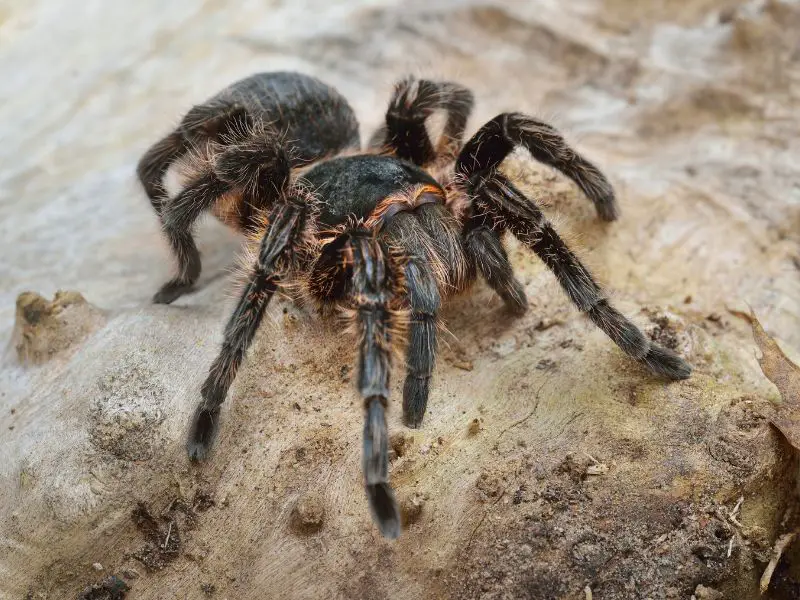
2. Glass Frogs
The glass frog is an exotic and charming creature found in southern Mexico, Central America, and South America. They like to live in the mountains near flowing streams in the rainforests, where they raise their offspring.
These tiny frogs have translucent bodies that reveal all their internal organs and soft skin that camouflages them from birds. They have big, golden-green eyes with black pupils, excellent eyesight to help catch insects, and a high-pitched whistling sound to attract mates.
They are also communal, living in small groups called an “army” that hunts for food from dusk until sunrise and sleeps all day until it becomes dark again. These frogs are almost magical in appearance and are hard to see and even harder to capture, leading biologists to keep discovering new species.
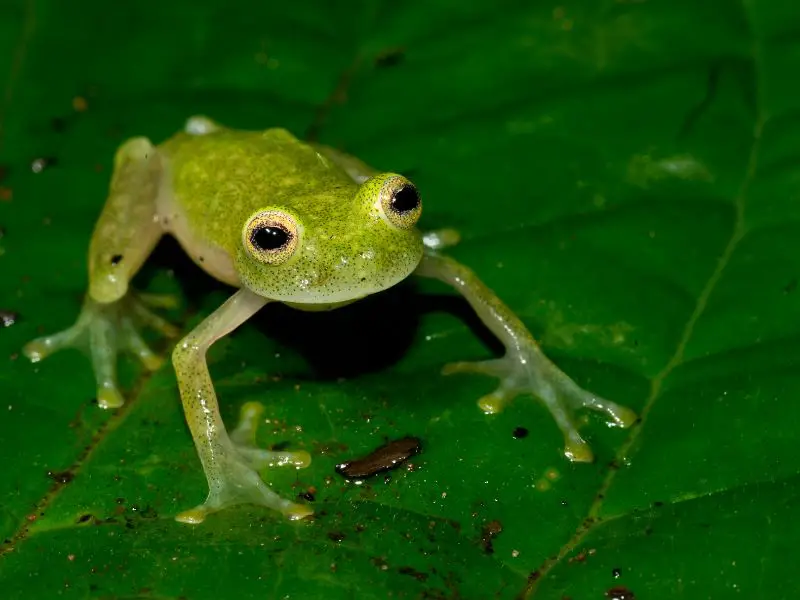
3. Golden Lion Tamarin Monkey
They move swiftly through the trees using vines as pathways to protect themselves from predators, such as raptors, cats, and large snakes. These tamarins live in family groups that are monogamous and actively defend a territory of about 100 acres. They mark their territory through vocalizations and scent markings and typically have twins, with each baby weighing only 10% of their mother’s body weight!
Golden lion tamarins can be found in the Atlantic Coastal Forest of Brazil and live in lowland coastal rain forests with plenty of vines and bromeliads, which attract insects and amphibians for protein and fats. These primates have long, slender fingers that can probe into crevices for food. They are omnivores, eating various fruits, insects, small vertebrates, and bird eggs. Tamarins are also given foraging devices to elicit their natural behavior.
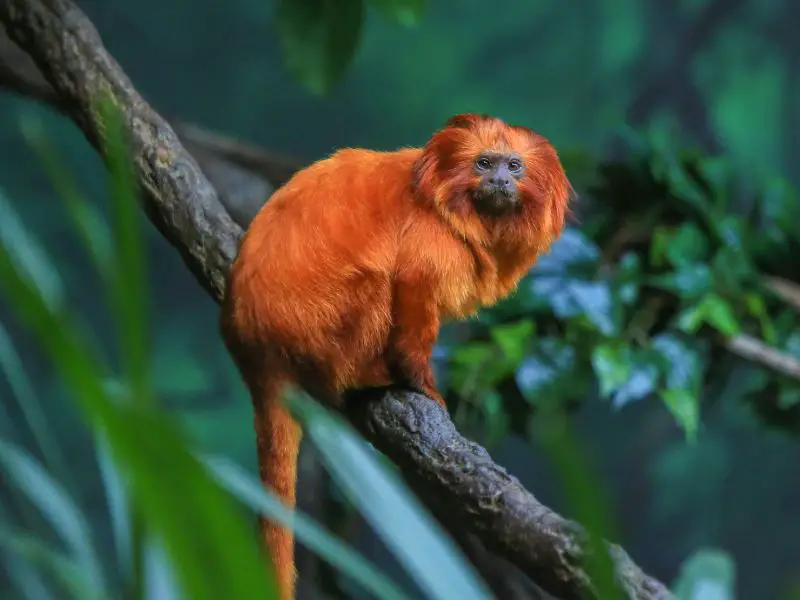
4. Poison Dart Frog
Poison dart frogs are a group of amphibians known for their brightly colored bodies and toxicity, which act as a deterrent for predators. In tropical rainforests of Central and South America, poison dart frogs survive on a diet of small insects and use their long, sticky tongues to catch their prey. They carry poison on their skin, making them highly toxic and unsafe to handle. Many poison dart frogs now appear on the endangered species list due to deforestation and human infrastructure projects encroaching on their natural habitat.
Poison dart frogs are diurnal, which is quite rare for frogs, as most species are nocturnal. An interesting theory some scientists have is that poison dart frogs became toxic because of their diet. Since many insects in the rainforest are poisonous, eating these insects, through a long evolution, made the frogs toxic.
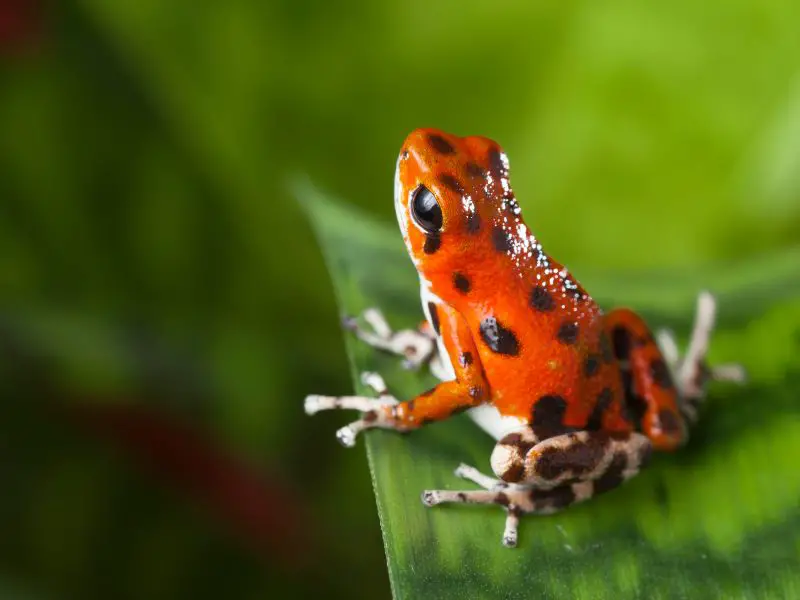
5. Jaguar
Jaguars are some of the most stunning big cats and can be found in the Amazon rainforests. They’re native to the Americas and look a lot like leopards but are much larger and stronger with a fur-covered, spotted bodies.
These big cats are great swimmers with powerful jaws and fierce bites. They can even crush the skulls of their prey! Territorial and protective, jaguars symbolize beauty and strength among other predators. Unfortunately, humans pose a severe threat to them, as deforestation and illegal poaching have led to losing their habitat and prey.
Despite their power and majestic presence, jaguars face an uphill battle against humans. It’s up to us to help protect these incredible animals so they can continue to thrive in the wild.

6. Amazonian Manatee
The Amazonian manatee is a unique marine mammal that feeds mainly on aquatic vegetation. They have a distinct habit of constantly replacing their molar teeth and prefer large blackwater lakes or lagoons with abundant aquatic vegetation. Manatees consume 9-15 kilograms (20-33 pounds) of leafy vegetables daily in captivity.
Amazonian manatees can be active day and night and are only found in the Amazon River Basin in northern South America. While manatees were hunted in the past for their meat, oil, and fat, conservation efforts have prohibited manatee hunting since 1973. However, manatees still face threats such as accidental drowning in commercial fishing nets, soil erosion from deforestation, and decreased food supplies.

7. The South American Tapir
The South American Tapir is an impressive animal and the second-largest mammal on the continent. It’s a unique-looking creature, sporting a snout that resembles the base of an elephant’s trunk and hooves. Though they may look like pigs or anteaters, they’re related to horses and rhinoceroses.
Tapirs are usually found near water sources and feed on clay licks in the rainforest. Be aware of their bulky appearance; tapirs are pretty nimble. They are great swimmers and often dive to the bottom of riverbeds to feed on aquatic plants. These magnificent animals love to cool off by submerging themselves in the water and wallowing in the mud.
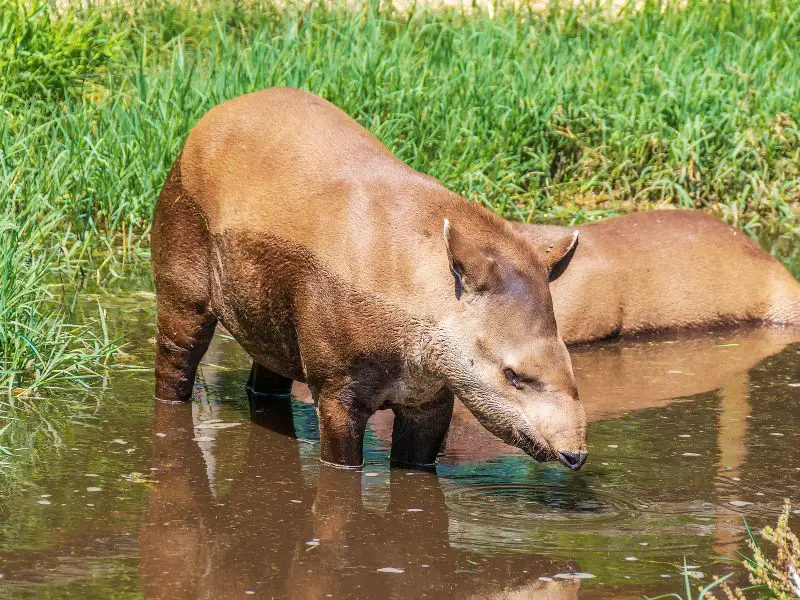
8. Hyacinth Macaw
Macaws are the largest parrot species, with the hyacinth macaw being the biggest, measuring around 3.3 feet from head to tail, with a wingspan that reaches nearly 5 feet. These birds are also vibrantly colorful, displaying a range of shades and patterns on their distinctive facial patches that are unique to each bird. They are social birds communicating through screeches and squawks, marking their territory, and identifying each other.
Macaws are omnivores that eat fruits, nuts, seeds, insects, and clay from clay licks along riverbanks in the Amazon Basin. These birds are intelligent and can manipulate and examine items with their strong toes. They are also talkative creatures that can mimic human speech and communicate with creative expressions.
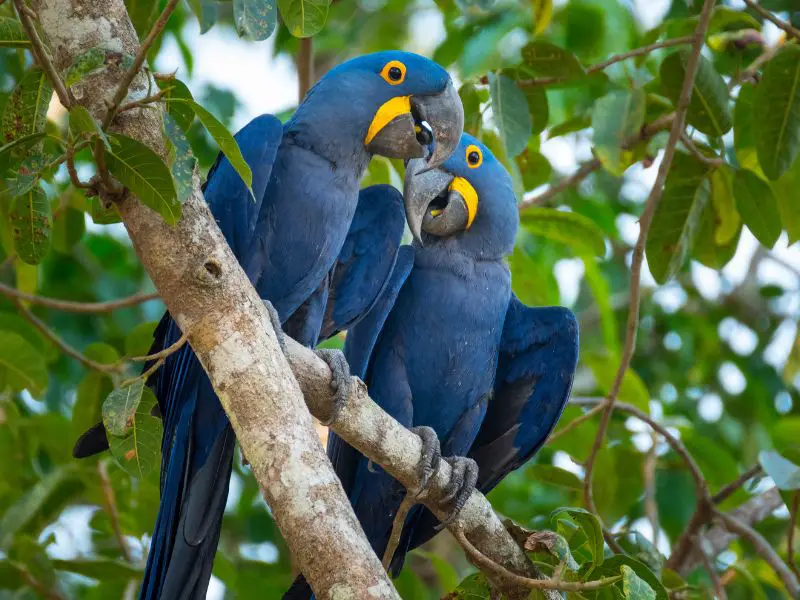
9. White-Cheeked Spider Monkey
The white-cheeked spider monkey is a tree-swinging primate in central Brazil’s Amazon basin. They have long arms and legs, mostly dark brown or black, with white hair on their forehead, chin, and cheeks. Their diet is mainly fruit, supplemented with leaves, flowers, seeds, bark, honey, and sometimes small insects.
White-cheeked spider monkeys are difficult to spot because they prefer heights and rarely venture to the understory. They ward off predators by barking and shaking nearby branches and may throw small branches if threatened. Sadly, they are endangered due to habitat loss and hunting, as some indigenous peoples in Brazil consider spider monkey meat a delicacy.

10. Bald Uakaris
Bald uakaris are small, red-faced monkeys found exclusively in the Amazon River basin. Their bright red faces, bald heads, and shaggy coats make them stand out. These monkeys weigh between 2.75 and 3.45 kg and have powerful jaws to feed on a diet of brazil nuts, fruit, leaves, and insects. They prefer living in flooded rainforests and waterside locations.
Despite their attractive appearance, bald uakaris are hunted for food and captured by indigenous people. Because of hunting and habitat loss, the species has declined at least 30% over the past 30 years, making them a vulnerable species since 2008.

Read More: How Soybean Farming in the Amazon Is Causing Deforestation
Bottomline
The Amazon rainforest is home to a vast array of unique and rare animal species, many of which are endangered due to habitat loss, hunting, and other human activities.
From the jaguar, the largest big cat in the Americas, to the colorful and intelligent macaw, the largest parrot in the world, to the small and elusive bald uakari with its striking red face, each species plays a vital role in maintaining the delicate balance of the rainforest ecosystem. Our responsibility is to protect these rare animals and their habitats through conservation efforts, education, and sustainable practices.

